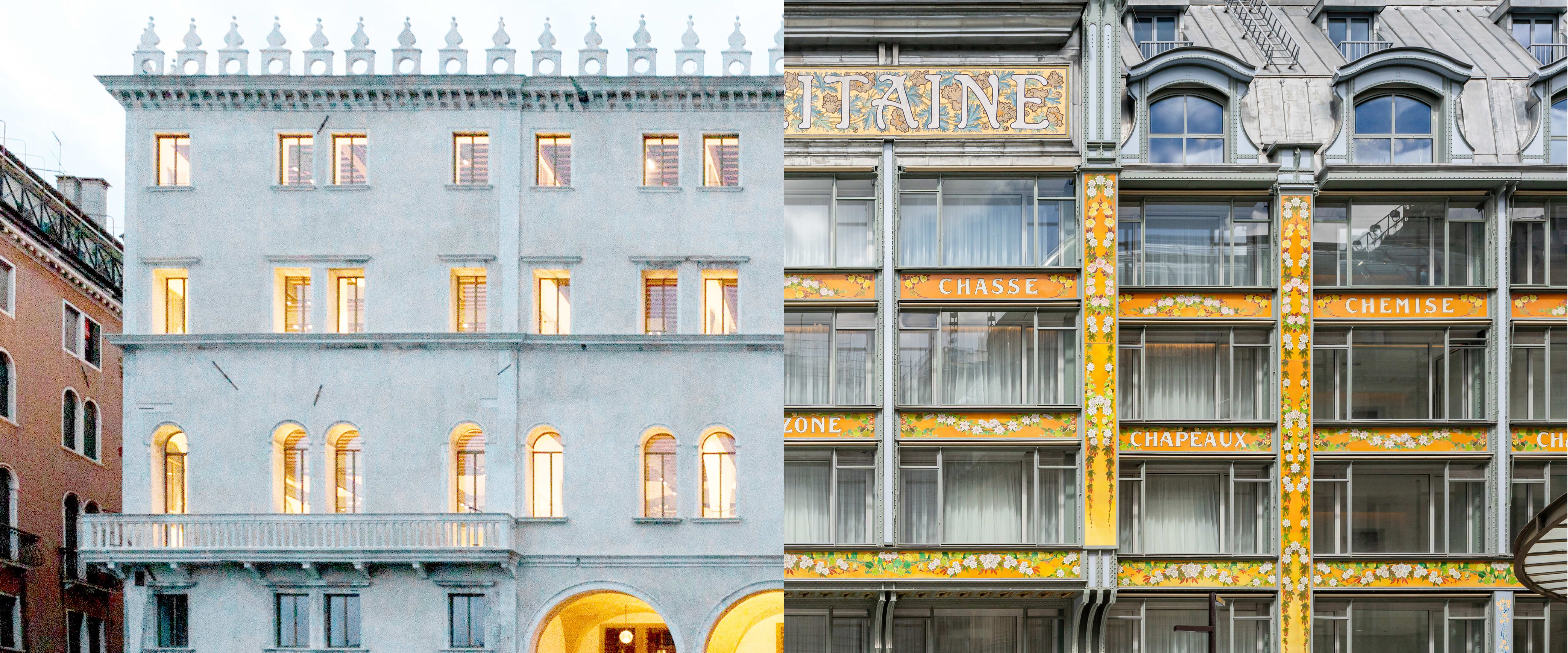A Parisian destination meets a Venetian institution. Both owned by the DFS Group, the world’s leading luxury goods retailer, the two stores are joining forces for the first time as part of a campaign. It’s the perfect opportunity to find out more about these two iconic venues.
A long history
Samaritaine
Ernest Cognacq and his wife Marie-Louise Jaÿ set up shop here in 1870, initially with a single stall, before expanding to include adjoining shops. In 1910, Frantz Jourdain's Art Nouveau building was inaugurated, followed in 1928 by the Art Deco structure designed by Henri Sauvage. Their commitment to bold architectural choices reflects the pair's avant-garde vision! Samaritaine quickly became the ultimate destination to explore the latest trends. In 2021, after 15 years of renovation, the department store reopened its doors to the public with 20,000 m2 dedicated to fashion, beauty, gastronomy and jewelry.
Fondaco Dei Tedeschi
Though the date of the Fondaco's original construction is not known for certain, a building bearing the name Fondaco was used by German merchants as early as 1225. Following a fire, the structure was rebuilt in 1508 and resumed its commercial activity. In the 1920s, the Fondaco even served as headquarters for the Italian post office! Acquired by Edizione Property in 2008, the building underwent a complete renovation by Dutch architect Rem Koolhaas and OMA Studio Group before reopening its doors to the public in 2016. Located in the heart of Venice near the Rialto Bridge, the Fondaco maintains close ties with the city's cultural institutions and features 750 brands and 850 boutiques.
Dazzling architecture and materials
Samaritaine
In 2005, under the ownership of the LVMH Group, Samaritaine embarked on an ambitious renovation project that included the complete restoration of its original Art Nouveau and Art Deco buildings and, on the Rue de Rivoli side, a new undulating façade designed by the Japanese architectural firm Sanaa. Inside, Samaritaine basks in natural light provided by the mythical glass roof of the Art Nouveau building on the Pont-Neuf side and two new skylights designed by Sanaa. Heritage and modernity come together on every floor, with the Eiffel structure on one side and a more urban, industrial style on the other.
Fondaco Dei Tedeschi
While stone – used for the building's steps and 140 arches – and cement remain the building’s visible foundations, Rem Koolhaas chose brass to bring the premises to life. Twenty tons of the material, in both raw and oxidized form, were used throughout the 7,000 m2 building, on windows, decorative features and the panoramic terrace. Glass and steel also feature on the 4th floor, which hosts artistic events, while marble elevates the 3rd-floor tables.
Signature elements
Samaritaine
On the 5th floor of the Paris department store, a majestic, shimmering fresco stretches 3.5 meters high and 115 meters long. The peacock, Samaritaine’s emblem, is considered a masterpiece of Art Nouveau. This 425 m2 Francis Jourdain masterpiece has been restored to its former glory. To view it, take the iconic central staircase, which has been meticulously renovated. What makes it so special? 16,000 gold leaves, Art Nouveau ceramics under the landings and 270 original oak steps.
Fondaco Dei Tedeschi
Fondaco Dei Tedeschi’s interior was designed by Jamie Fobert, who harmoniously blended the original features with more contemporary touches, reinterpreting Venetian codes and colors. The signature crimson escalator embodies the modernity of the space, glamorously reminiscent of a flowing red carpet. The top floor features a rooftop terrace with a breathtaking, world-famous view of the lagoon.
Joining forces for the Paris Venice campaign, Samaritaine and Fondaco share many common features, from embodying French and Italian know-how to bridging the gap between the past and future.






